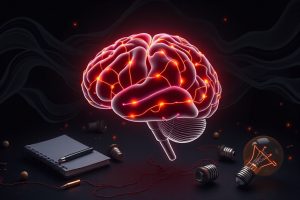Introduction: Exploring the Potential of Genius Wave and Neuroplasticity
Neuroplasticity refers to the brain’s remarkable ability to reorganize itself by forming new neural connections throughout life. This capacity underpins learning, memory, recovery from injury, and cognitive development. Over recent years, various techniques and devices have emerged claiming to enhance neuroplasticity and cognitive function, often promising rapid or extraordinary results.
One such concept gaining popularity is the so-called “genius wave.” This idea suggests that specific sound frequencies or neural stimulation methods can unlock hidden mental potential, improve intelligence, creativity, and learning abilities. The purpose of this article is to examine the scientific validity of these claims and assess their safety, helping readers make informed decisions about such technologies.
What is the “Genius Wave”? Understanding the Claims
The “genius wave” is a term used to describe a range of auditory or neural stimulation techniques purported to enhance brain function. Originating from alternative wellness communities and neurotechnology markets, the concept often involves listening to particular sound frequencies or using devices that emit specific neural signals.
Proponents claim that the genius wave can boost intelligence, foster creativity, improve memory, and accelerate learning. These claims are typically associated with devices that produce sound frequencies—such as isochronic tones or binaural beats—or with neural stimulation therapies designed to entrain brainwave activity.
Many products marketed as “genius wave” tools include headphones or apps that generate rhythmic sounds, aiming to influence brain oscillations and, consequently, cognitive states.
The Science Behind Neuroplasticity and Brain Oscillations
Neuroplasticity is a well-established scientific phenomenon whereby the brain adapts structurally and functionally in response to experience, learning, or injury. This adaptability is fundamental to acquiring new skills and recovering from neurological damage.
Brainwave frequencies—such as alpha (8-13 Hz), beta (13-30 Hz), gamma (30-100 Hz), delta, and theta—are associated with different mental states. For example, alpha waves are linked to relaxation, while gamma waves are associated with high-level information processing and consciousness.
Sound therapy and neural entrainment techniques aim to influence these oscillations, potentially modulating mental states. While some research suggests that rhythmic stimuli can synchronize brain activity, the extent to which this promotes neuroplasticity remains an area of ongoing investigation.
Does the “Genius Wave” Actually Promote Neuroplasticity? Evidence Review
Current scientific research on brainwave stimulation and neuroplasticity provides mixed results. Some studies indicate that rhythmic auditory stimulation can temporarily influence brainwave patterns, but evidence supporting long-term neuroplastic changes is limited.
Regarding sound-based therapies like isochronic tones or binaural beats, peer-reviewed research is scarce and often inconclusive. Many claims about the “genius wave” lack rigorous scientific backing, relying instead on anecdotal reports or marketing assertions.
While the idea of using sound frequencies to enhance cognition is intriguing, the scientific community generally considers these claims as preliminary and not yet substantiated by robust evidence.
How Might the “Genius Wave” Influence Brain Function? The Neuroscience Perspective
From a neuroscience standpoint, the proposed mechanisms include neural entrainment—where external rhythmic stimuli synchronize brainwave activity—and the potential for improved neural communication through synchronized oscillations.
However, current technology and understanding have limitations. The brain’s complexity means that simple frequency manipulations may not produce significant or lasting neuroplastic changes. Many effects observed are transient or placebo-driven, and exaggerated marketing claims often overlook these scientific nuances.
Thus, while some effects are plausible, the leap from temporary synchronization to meaningful cognitive enhancement remains unproven.
Assessing the Safety and Risks of “Genius Wave” Therapies
Generally, sound therapy and neural stimulation methods are considered safe when used appropriately. Listening to calming sounds or using non-invasive devices typically pose minimal health risks.
Nevertheless, potential side effects include discomfort, overstimulation, or adverse reactions in individuals with certain neurological conditions or sensitivities. Overuse or improper application could lead to fatigue or anxiety.
Regulatory oversight varies, and consumers should exercise caution, ensuring that devices are approved by relevant health authorities and used under professional guidance.
Practicality and Alternative Methods to Enhance Neuroplasticity
Evidence-based practices for promoting neuroplasticity include meditation, cognitive training, physical exercise, and maintaining good sleep hygiene. These methods have a substantial body of scientific support and are accessible to most people.
Compared to the uncertain benefits of “genius wave” devices, traditional approaches are more practical, proven, and safe. Engaging in regular mental and physical activities remains the most reliable way to support brain health and plasticity.
For those interested in exploring sound-based methods, it is advisable to consider approaches like isochronic tones and the genius wave a practical guide to boost brain power, which offers a balanced overview of their potential and limitations.
What Does Current Science Say About the Credibility of the “Genius Wave”?
The scientific consensus indicates that while brainwave entrainment and sound therapies can influence mental states temporarily, there is insufficient evidence to confirm that they produce lasting neuroplastic changes or significantly boost intelligence.
Many claims are driven by marketing rather than scientific validation, and consumers should remain skeptical of exaggerated promises. Critical evaluation of available research and consultation with healthcare professionals are essential before investing in such therapies.
Final Thoughts: Making Informed Decisions About Brain Enhancement Techniques
In summary, the idea of the “genius wave” as a tool for cognitive enhancement is intriguing but remains largely unsupported by rigorous scientific evidence. While sound and neural stimulation techniques may influence brain activity temporarily, their long-term benefits are unproven.
It is crucial to approach such claims with a critical mindset and prioritize proven methods for neuroplasticity enhancement. Consulting healthcare professionals before trying new neurostimulation methods ensures safety and appropriateness.
References and Further Reading
- Peer-reviewed studies on neuroplasticity and brainwave entrainment
- Authoritative sources on sound therapy and neural stimulation
- Additional resources for understanding and applying neuroplasticity techniques




